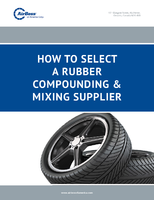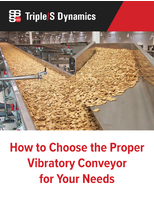ASTM Standard addresses lead content in turf fibers.
Press Release Summary:
ASTM F2765, Specification for Total Lead Content in Synthetic Turf Fibers, was developed to provide field owners/turf suppliers with procedure for measuring lead content in fibers. "Standard can be used to verify that fibers in synthetic turf do not contain intentionally added lead," said Phil Stricklen of Sportexe. Stricklen, also member of Committee F08, said potential users also include test laboratories that analyze synthetic turf fibers for total lead content.
Original Press Release:
New Lead Content in Turf Fibers Standard Developed by ASTM Sports Facilities Committee
W. CONSHOHOCKEN, Pa., September 25, 2009 - Two separate events have led to the development of a new ASTM International standard on lead content in turf fibers. First, after lead was found in some synthetic turf fields in 2008, field owners and turf suppliers were confused as to the proper procedure for measuring the lead content in the fibers. Different test procedures would yield different results so there was need for a standardized procedure.
Next, an announcement by the U.S. Consumer Product Safety Commission stated that, while several synthetic turf fields had been tested and found to be safe for children to play on, the turf industry was being asked to remove all intentionally added lead from turf fibers. The industry would need a standard to show that they had voluntarily complied with the CPSC request.
The result of these two events is the development of ASTM F2765, Specification for Total Lead Content in Synthetic Turf Fibers. The new standard is under the jurisdiction of Subcommittee F08.65 on Artificial Turf Surfaces and Systems, part of ASTM International Committee F08 on Sports Equipment and Facilities.
"This standard can be used to verify that the fibers in synthetic turf do not contain intentionally added lead," says Phil Stricklen, director of research and development, Sportexe, and a member of Committee F08. "Fiber producers can test their incoming raw materials and fiber products to assure that they do not contain lead other than that naturally occurring lead in the environment."
Stricklen says that potential users of ASTM F2765 include: 1) test laboratories that may be asked to analyze synthetic turf fibers for total lead content; 2) owners and producers of synthetic turf fields produced after Sept. 1, 2009, who can use the standard to verify that the yarn used to make their fields was produced without lead-based raw materials; and 3) synthetic turf fiber producers who can use ASTM F2765 for validation testing of the lead content in their products.
With the completion of ASTM F2765, another task group has been formed in F08.65 to address the environmental and health issues related to synthetic turf infill materials. Stricklen notes that the current generation of synthetic turf uses materials between the artificial grass blades that cushion the falls of people playing on the turf.
"The task group on synthetic turf infill materials would welcome input from anyone with expertise in extraction techniques and evaluation of environmental and human health risk assessment," says Stricklen.
ASTM International standards can be purchased from Customer Service (phone: 610-832-9585; service@astm.org) or at www.astm.org. For technical information, contact Phil Stricklen, Sportexe, Calhoun, Ga. (phone: 706-624-9680; phils@sportexe.com). Committee F08 will meet Nov. 10-13 during November committee week in Atlanta, Ga.
ASTM International welcomes and encourages participation in the development of its standards. ASTM's open consensus process, using advance Internet-based standards development tools, ensures worldwide access for all interested individuals. For more information on becoming an ASTM member, please contact Christine Sierk, ASTM International (phone: 610-832-9728; csierk@astm.org).
Established in 1898, ASTM International is one of the largest international standards development and delivery systems in the world. ASTM International meets the World Trade Organization (WTO) principles for the development of international standards: coherence, consensus, development dimension, effectiveness, impartiality, openness, relevance and transparency. ASTM standards are accepted and used in research and development, product testing, quality systems and commercial transactions around the globe.




